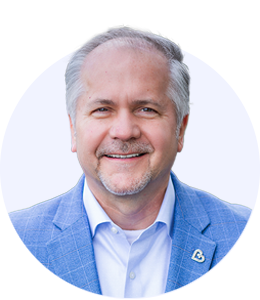Originally published by Becker’s Healthcare – click here to read in Becker’s Hospital Review.
Many healthcare leaders (those who’ve been around for a while) cut our teeth on a certain style of development: the Leadership Development Institute, or LDI (the “big tent” approach). Everyone would get together in a big room for a day and a half while coaches and speakers downloaded a ton of content into our heads. Then, we’d walk out of the LDI with what felt like too many skills to master at one time.
The past half-decade or so changed everything. Covid happened. Organizations (understandably) stopped getting together to learn leadership skills. Many clinicians were thrown into leadership positions with zero leader onboarding or precepting. At the same time, healthcare as an industry started moving even faster. With a high percentage of new leaders in an ever-more-complex environment, it’s not surprising that some of them feel left behind.
In short, healthcare is changing…and the way we develop leaders must change too.
I’m not suggesting we end LDIs. There is still value in getting the leadership team together. It allows for consistent messaging from the senior team, which bolsters alignment. Plus, it’s a great opportunity for recognition and getting reconnected to purpose.
What does need to change is how we approach the development that happens when leaders are not together under the same roof. First, we must realize that the LDI is about education and awareness. Those are good things, but they’re not precise enough to move the needle on skill-building.
It’s what happens a layer down from LDIs that truly makes the difference. The development approach we at Healthcare Plus Solutions Group recommend has gotten so precise that we give each leader a personal development plan that identifies the skills they need to do the job they have right now. This is particularly important for new leaders: We want them to be successful early so they don’t get burned out and leave. Much like in the world of cancer treatment, where precision medicine is delivered with the patient as an “n of 1,” we refer to this development work as Precision Leader DevelopmentTM.
We start with a list of skills that has been molded around the organization. Then, we measure leaders’ competency in those skills (we find a combination of self-assessment and input from the supervisor works best). Finally, we train each leader on two or three skills they most need to focus on at present. (We are careful not to overwhelm them.)
This is not about giving people a standard template of leader skills and applying them to everybody. It’s far more personalized and precise. Not only are the skills customized to the needs of the organization, but the training on those skills is also customized to the needs of the individual. People have different traits and learning styles, and precision development takes them into account as well.
In our work with organizations that approach training this way, we’re finding the outcomes are impressive. We’ve even seen one organization use the precision approach a layer down from middle leaders—the frontline supervisory level that typically doesn’t receive these skills. Hopefully, this signals a sea change in how our industry thinks about development—not just how we provide it, but to whom we provide it. Today’s younger talent in particular expects to be developed, and they expect leaders to give them what they need to be successful.
Here’s the bottom line: To rewire leadership development, we need a mindset shift around what it really is. It’s an investment—one that is desired and one that is likely to pay off in a big way as we seek to build cultures that attract and retain the best talent and lead to the best possible clinical outcomes. Those organizations that make the investment will be the winners, both today and in the future.







